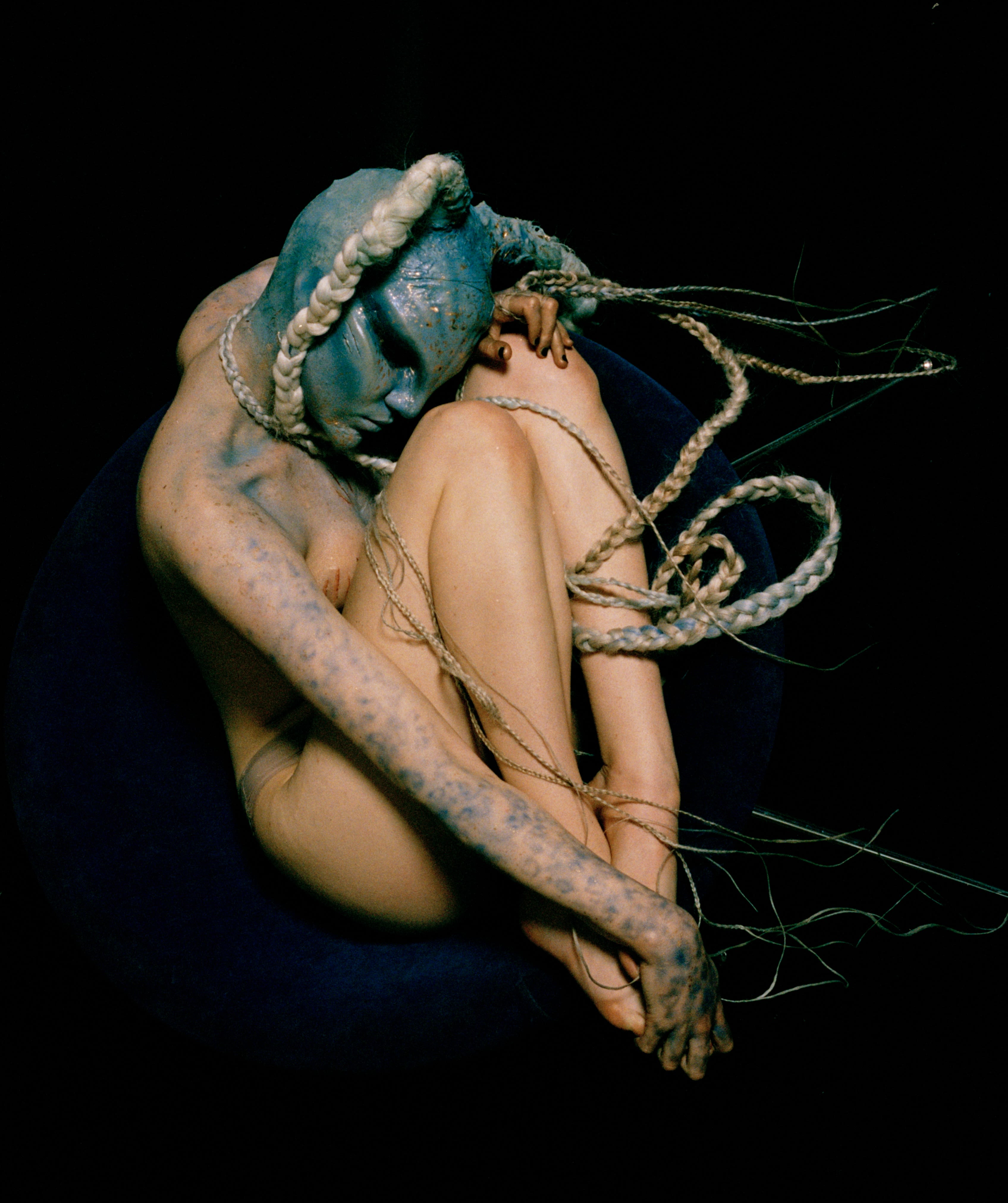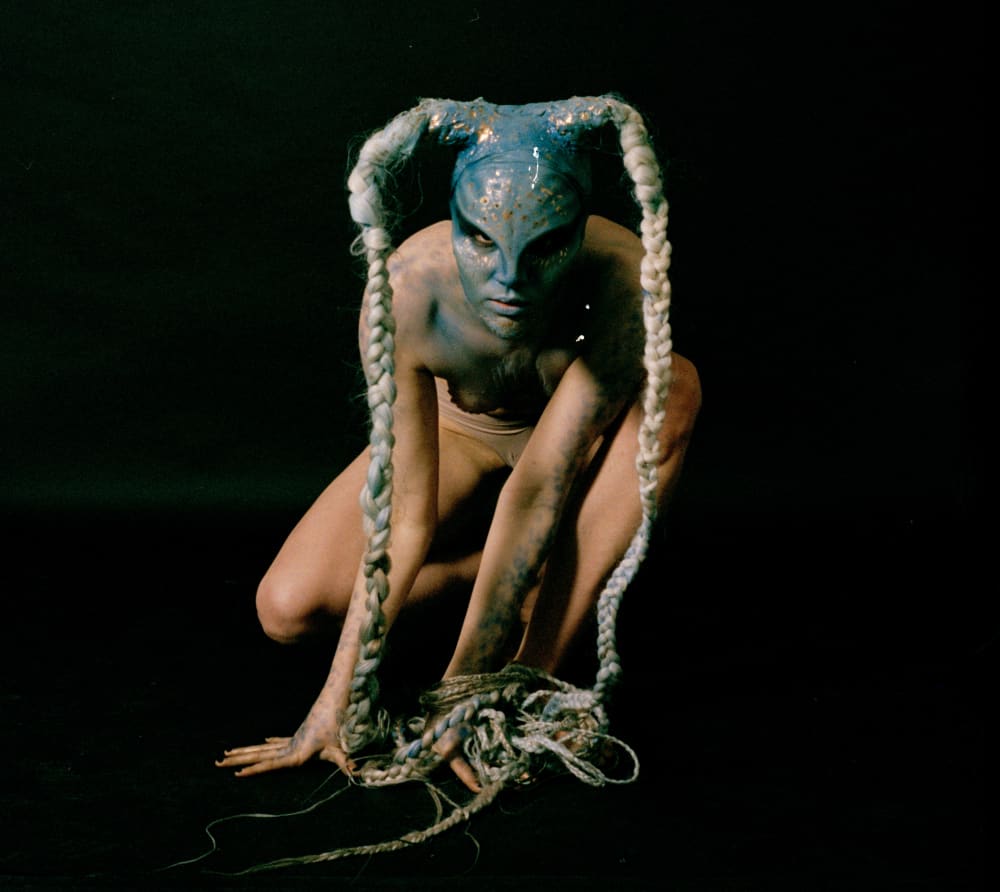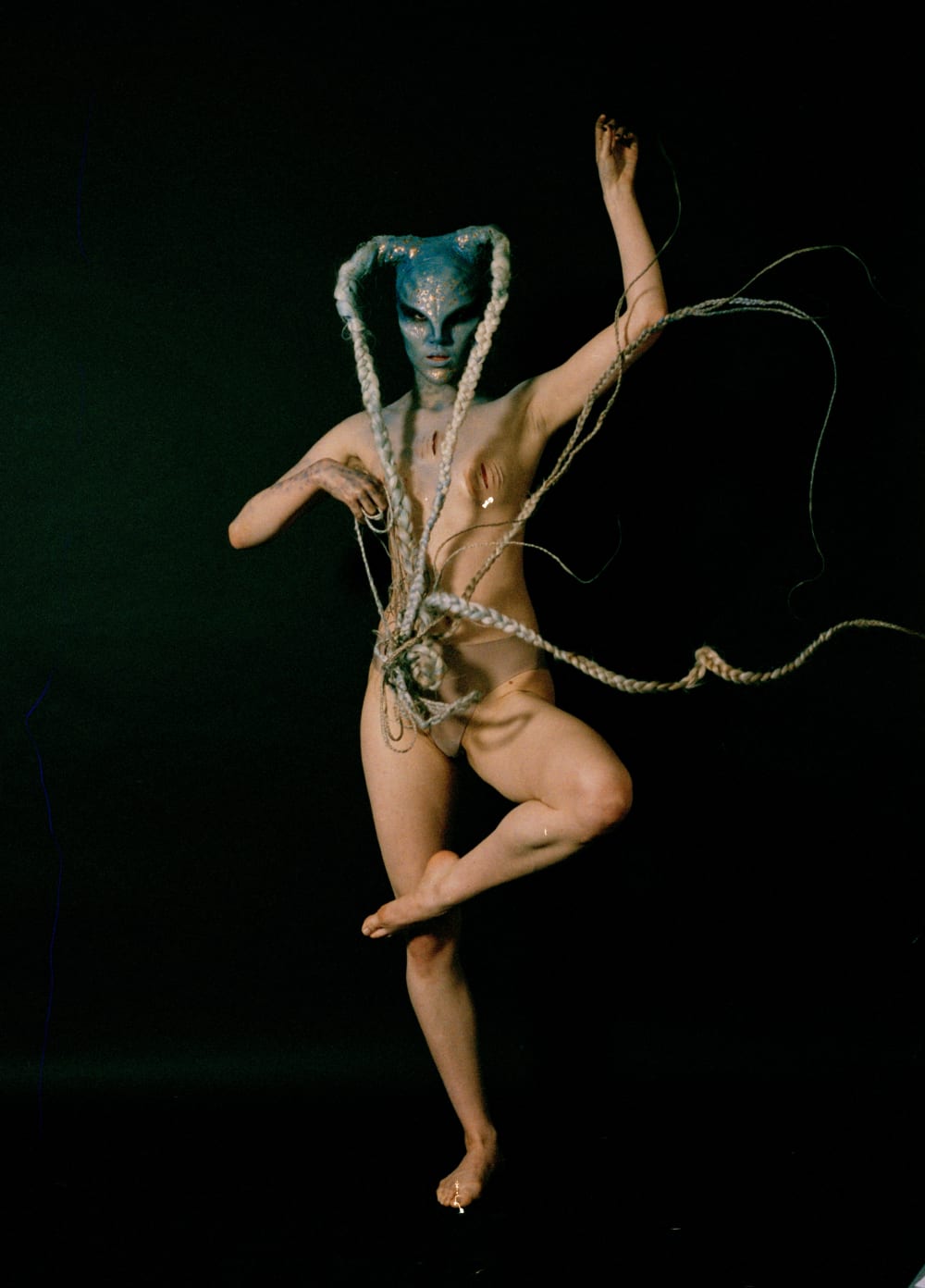
LCF Class of 2022: exploring Polish mythology with Julia Biały

- Written byL Hussain
- Published date 11 July 2022

As we approach the LCF Class of 2022 showcase and celebration from 13 July 2022, we're taking a look at some of the work created by this year's graduating cohort.
Next in our series of interviews is BA (Hons) Hair, Makeup & Prosthetics for Performance student Julia Biały, whose final project 'Rusalka' will be presented as part of the LCF Summer Showcase.
Julia explores parts of her Eastern European heritage and focuses especially on the duality of the nature of Rusalka - a water nymph coming from Polish mythology. In her interview she talks about how her project pushes boundaries and raises unspoken truths to the surface.

In most of my personal works I tend to go back to the universal qualities that the mythological tales hold. Rusalka is a name polish legends give to water nymphs. When I was thinking of "going back to my roots" for this project, I remembered all the romantic poets polish students have to study at school and the way they talk about women: as a magical being of dual nature, beautiful when good, ugly when evil. The romantic poems/stories usually focused Rusalka’s whole sense of existing on desiring one man's attention and then subsequently becoming tormented by his lack of fidelity, leading her to seek revenge and eventually transforming from a gorgeous girl to a repellent monster, therefore showing its "true" nature.
Such binaries are still present in these conceptions which made me want to question them, especially seeing that they are still somewhat very much present in the society, influencing the way we see and even value people around us. The dual nature of Rusalka ironically made me want to explore all the possible shades that can be found within her personality and story.
One particular poem that inspired me to focus on these notions was Switezianka (meaning the lady of the lake Switez) by Adam Mickiewicz.

Having been working in a solely appearance-based industry for a few years now, I know how many culturally coded messages can convey the way somebody looks or dresses.
The world of film, theatre and fashion heavily depend on its performative aspect, therefore the individuals who give their bodies to these industries such as models or actors face the scrutinization and objectification of their physical appearances every single working day. I experienced this feeling myself as a child actor and then later, ever since I started doing my own makeup, always adhering to the current beauty standards. This is the reason why, I wanted this project to embrace all the stories I’ve heard from my acting friends both from Poland and UK and tie it to the myths and legends, encompassing still a very much present voyeuristic view of the female characters.
Along with the influences I’ve listed above, I have also written a draft script of the film in which this character would appear. It tells a story about Mia, a young female starting her career as an actor living in London who one day notices her appearance acquiring aquatic features.
My film influences were Shape of Water, Black Swan, The Lighthouse and Cronenbergs body horror.

This piece is meant to work 2 ways: a stand-alone statement of aesthetics, or a visual story that speaks on its own, relating to whatever the viewer sees and feels in relation to it, hung in the time and space. Though, I do feel the history and motifs behind it are pretty up to date to many social debates revolving around body positivity and even neutrality. Its dysmorphia caused by social media, the self-image exploitative side of arts industries and the traditional values carried by the authors of the past opens discussions on the progress in understanding one another in this society.
One of my biggest challenge when working on this project was to organise a shoot as it was definitely the most stressful day of this year so far. Finding collaborators may be a tough one as well, but thankfully I was super lucky to be able to work with people I trusted and great artists themselves.
As the concept spoke about the pressures of self-image and therefore reflecting mental wellbeing, it was a great concern of mine to ensure that everyone felt comfortable whilst on shoot. I did everything I could to help everyone feel at ease on set and that everything was consensual.
I think the greatest part of this course for me was the variety of subjects we could learn about, including cultural, film and fashion studies that gave me a wider perspective on the art of hair, makeup and prosthetics. I feel they helped elevate my craft to the level of art that actually tells a strong story.
Moving forward after the Graduate Showcase I want to try absolutely everything. Currently, I am working at the National Theatre as a wig and makeup assistant and as a freelance MUAH on short film sets which allow me to enjoy the job as a designer too. I think this self-expressive part of my practice will always be present in what I do in life, and I know there are no limits in what artistic media I can utilise to present to an audience. I am still waiting for my chance to work in a higher profiled professional fashion and editorial makeup world, but I am sure it will come soon.

- View more work on the UAL Graduate Showcase.
- Keep up to date with the LCF Class of 2022 Campaign.
- View our upcoming Open Days.